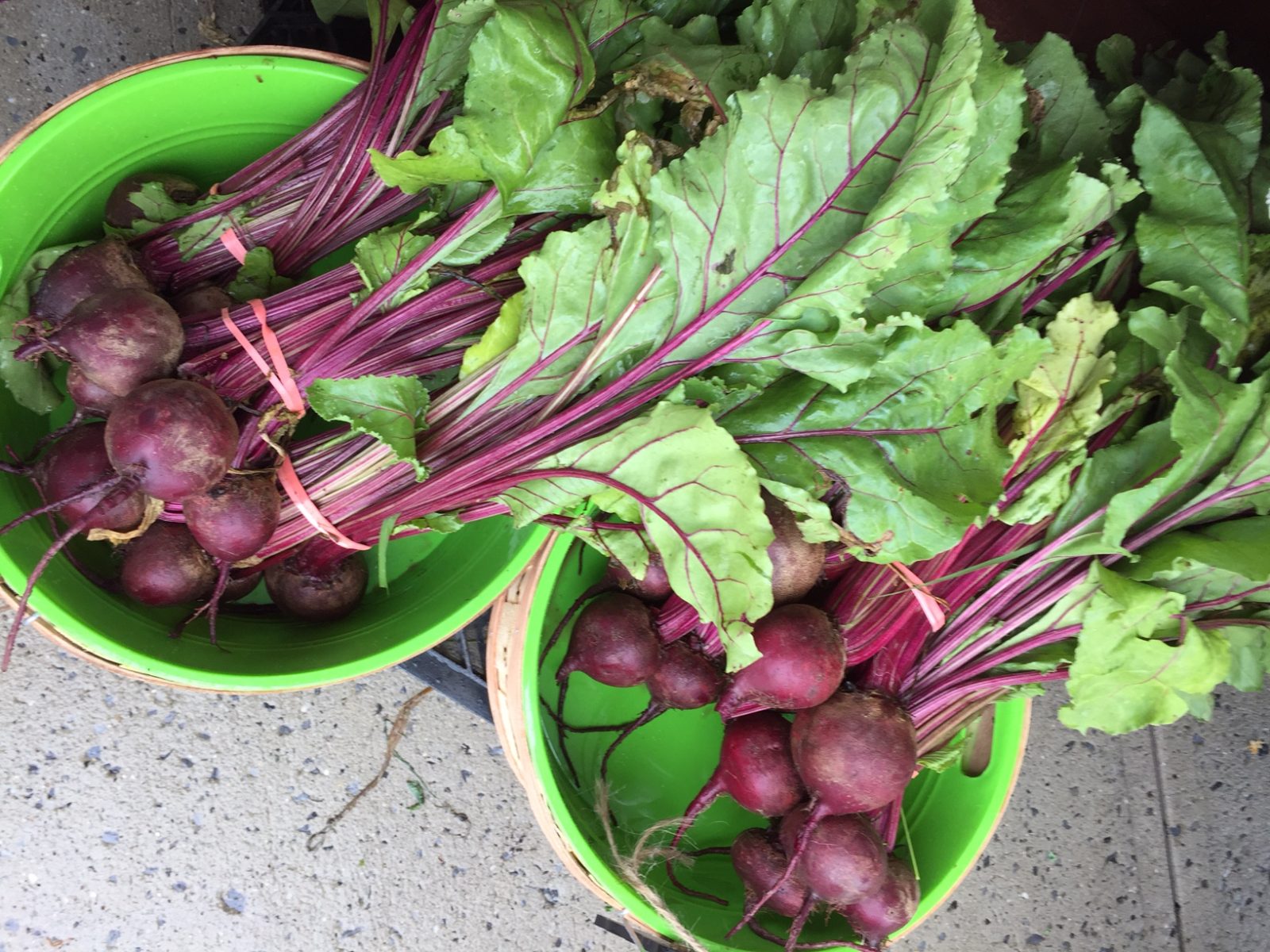When I was a kid, my Ukrainian great aunt used to cook and eat borscht, also known as beet soup. Borscht uses the red beet root as its main ingredient and is often topped with sour cream. As you can imagine, I was not a big fan of beets at that time. However, many years later, I can now say that I love the beet root and everything that grows above the ground as well! I love beets – raw, roasted, baked, grilled or barbecued.
Beets are root vegetables which means the vegetable we eat is the actual root of the plant – also known as the beet root. The greens that grow above the ground are also edible and very high in protein, phosphorus, zinc and fiber. One of our farm volunteers shared a beet pie recipe with us last season that uses the greens and stems of the beet plant. It was delicious!
Nothing ‘beats’ the vibrant, beautiful color of a red beet. But there are also other colors represented by the different types of beets. These varieties include red, golden, striped, Cylindra, Mangel-wurzel Beets, and sugar beets.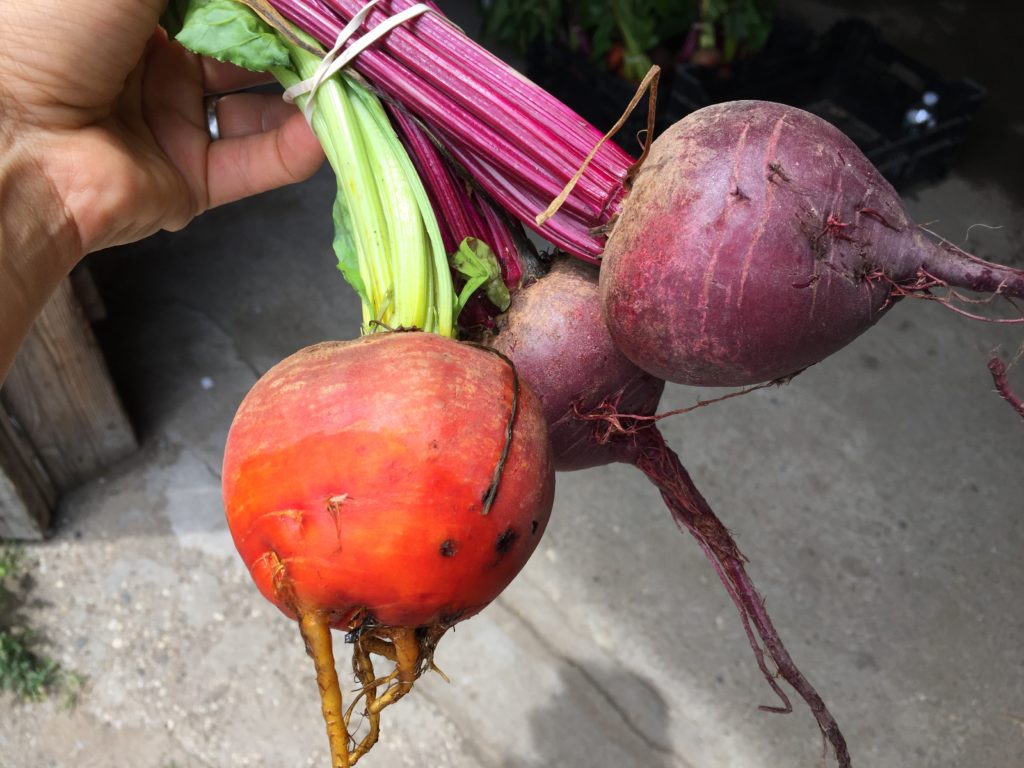
People are most familiar with red or purple beets. Golden or yellow beets have a slightly milder flavor compared to red beets and display a beautiful golden color inside. The first golden beet was introduced in the early 1800’s. With their mild and sweeter flavor, the taste of golden beets becomes intensified when roasting. After growing and tasting golden beets from our farm, they have become my favorite type of beet!
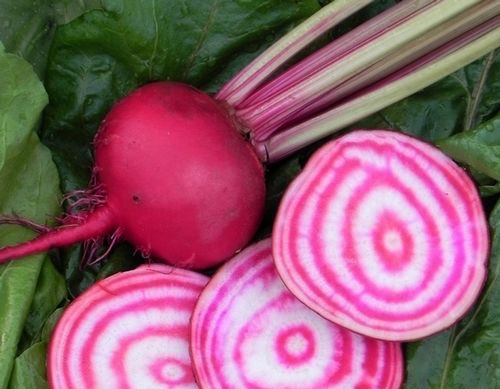 Striped beets are called Chioggia or Bassano Beets. The striping occurs on the interior of the vegetable and gives it a candy-cane appearance. This variety was first introduced in America in late 1840. It was named after a fishing village in Northern Italy where it had been first cultivated in the early
Striped beets are called Chioggia or Bassano Beets. The striping occurs on the interior of the vegetable and gives it a candy-cane appearance. This variety was first introduced in America in late 1840. It was named after a fishing village in Northern Italy where it had been first cultivated in the early 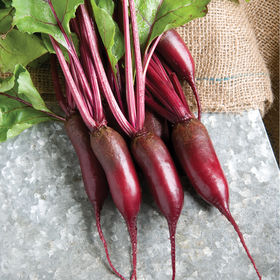 1800’s.
1800’s.
Cylindra beets look more like a carrot. They are a Danish heirloom variety that dates back to 1880. It has a burgundy color and has a long, cylindrical shape and at full growth after 60 days, most are 6 to 9 inches long.
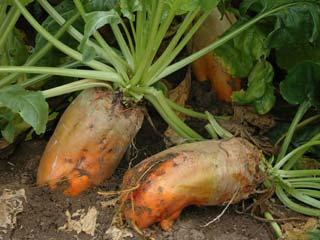 Mangel-wurzel Beets are also known as mangold. This type of beet was often used for animals in the 1800s, but it has grown in popularity among farmers.
Mangel-wurzel Beets are also known as mangold. This type of beet was often used for animals in the 1800s, but it has grown in popularity among farmers.
Sugar Beets resemble a turnip as their coloring is off-white and their shape is like a cone. About 20% of the world’s sugar production is from sugar beets. You might recall seeing sugar beets on some ingredient labels. Sugar beets have an extremely high sucralose level which makes them not as edible as regular beets. Sugar beets are typically grown as a commercial crop. However, growing sugar beets is a great project for kids as the greens could be used like spinach or Swiss chard and the root can be used to produce sugar. Another interesting science project for the kids!
a cone. About 20% of the world’s sugar production is from sugar beets. You might recall seeing sugar beets on some ingredient labels. Sugar beets have an extremely high sucralose level which makes them not as edible as regular beets. Sugar beets are typically grown as a commercial crop. However, growing sugar beets is a great project for kids as the greens could be used like spinach or Swiss chard and the root can be used to produce sugar. Another interesting science project for the kids!
Now that we explored the different types of Beets, don’t forget to purchase some beet varieties and prepare yourself for some delectable beet recipes…more to come soon!
